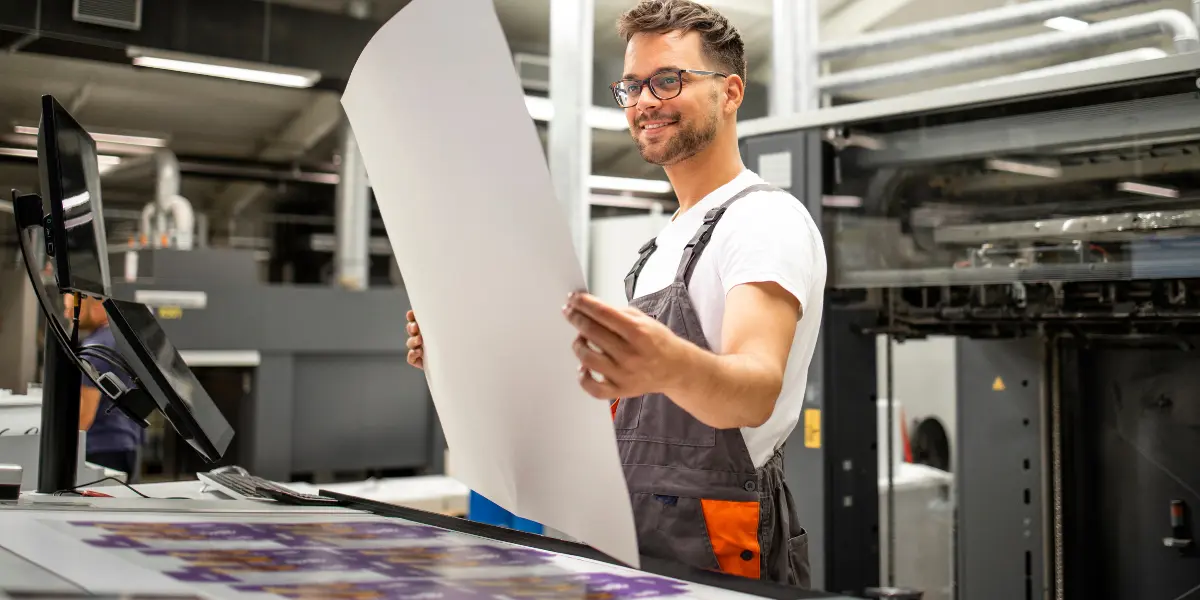Offset vs Digital Printing: Which Should You Choose?

When planning a print project, one of the first decisions you’ll make is whether to go with offset printing or digital printing. Each method has unique strengths, costs, and ideal use cases — and choosing the right one can impact quality, turnaround time, and budget.
Posted by
Offset vs Digital Printing: Which Method Is Right for Your Project?
When planning a print project, one of the first decisions you’ll make is whether to go with offset printing or digital printing. Each method has unique strengths, costs, and ideal use cases — and choosing the right one can impact quality, turnaround time, and budget.
This guide breaks down how each method works, when to use them, and how to decide which is best for your project.
What Is Offset Printing?
Offset printing transfers ink from metal plates to a rubber blanket, then onto paper. It’s the gold standard for high-volume and high-quality print runs.
Best For:
- Large print quantities (1,000+ copies)
- Consistent color accuracy
- Projects requiring specialty inks or finishes
Pros:
- Lower cost per unit for large orders
- Exceptional image quality and detail
- Wide variety of paper and finish options
Cons:
- Higher setup costs
- Longer turnaround for small orders
What Is Digital Printing?
Digital printing uses toner or liquid ink to print directly from a digital file — no plates required. It’s ideal for short runs, quick turnarounds, and customization.
Best For:
- Small print quantities (under 1,000 copies)
- Variable data printing (names, addresses, unique codes)
- Fast deadlines
Pros:
- Low setup costs
- Faster turnaround times
- Easy to personalize each piece
Cons:
- Higher cost per unit for large orders
- Slightly less color consistency for very large runs
Cost Comparison – Offset vs Digital Printing
Offset printing has higher setup costs but lower unit prices for large runs, making it ideal for bulk projects with excellent color consistency. Digital printing offers lower setup costs, faster turnaround, and is more cost-effective for small runs, though its color consistency is slightly less precise than offset.
How to Decide Which Is Best for Your Project
- Quantity – Large runs often favor offset; small runs work best with digital.
- Budget – Factor in both setup and per-unit costs.
- Deadline – Digital is faster if time is critical.
- Customization Needs – Use digital for personalized or variable-data jobs.
- Quality Requirements – Offset has the edge for absolute precision and detail.
FAQs – Offset vs Digital Printing
Can I combine both methods for the same project?
Yes — for example, you might use offset for the bulk of a print job and digital for short-run, personalized add-ons.
Which is better for full-color brochures?
Offset offers the most consistent and accurate color reproduction, but digital can still produce high-quality results for smaller runs.
Does digital printing work on specialty papers?
Yes, but options may be more limited compared to offset.
Conclusion & Next Steps
Offset printing is the choice for high-volume, precision projects, while digital printing shines for short runs, fast turnarounds, and customization. The right choice depends on your project’s size, budget, and deadline.
📞 Need help choosing the right printing method? Call (385) 281-8441 or request a quote from Elevated Group to discuss your options with our printing experts.
